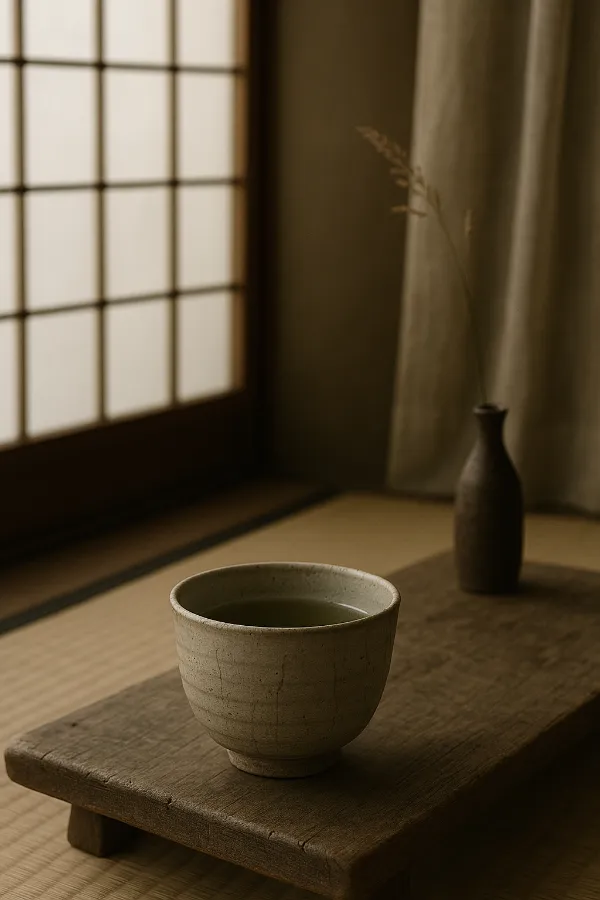Japanese Aesthetics
Japanese Aesthetics represent a rich and complex framework of artistic principles and cultural values that have profoundly influenced both traditional and contemporary art, literature, and society in Japan and beyond. Rooted in key concepts such as mono no aware (the pathos of things), yūgen (subtle profundity), and wabi-sabi (the beauty of imperfection), these aesthetics emphasize the appreciation of transience, natural beauty, and the emotional resonance of experiences, reflecting a unique worldview that prioritizes connection with nature and the ephemerality of life.
Mono no Aware
Mono no aware (物の哀れ), often translated as “the pathos of things,” embodies a sensitivity to the ephemeral nature of life and a deep emotional response to the beauty found in transience.
The term was popularized by the scholar Motōri Norinaga and reflects a Japanese worldview that appreciates the fleeting qualities of existence. It signifies an empathetic connection to nature and objects, recognizing that they possess their own essence and sensitivity. The emotional resonance associated with mono no aware is frequently linked to feelings of nostalgia and melancholy, particularly in relation to the changing seasons.
Yūgen
Yūgen (幽玄) is a fundamental concept in Japanese aesthetics, often translated as “subtle profundity.” The term is composed of two kanji: yū (幽), meaning “faint” or “dim,” and gen (玄), meaning “dark” or “mystery”.
Its origins can be traced back to Chinese philosophy, where it referred to things that are too deep to be fully understood. In the Heian period, yūgen was primarily used to describe profound or esoteric poetry, but it gained a broader significance during the Kamakura period (1185-1333), influencing literature, fine art, and gardening.
The concept has a close connection with Zen, both being concerned with the hidden realities beneath the surface of the world.
Wabi-Sabi
For example, the principles of wabi-sabi continue to resonate in modern design and art, promoting sustainability and mindfulness amidst a fast-paced world, while encouraging an appreciation for the beauty in imperfection and decay.
Wabi-sabi (侘び寂び) is another cornerstone of Japanese aesthetic philosophy, emphasizing the beauty found in imperfection and the natural cycles of life. It combines two concepts: wabi, which signifies a subdued, austere beauty, and sabi, which denotes the beauty that comes with age and the passage of time.
Wabi-sabi is rooted in Buddhist teachings, specifically the ideas of impermanence (無常, mujō), suffering (苦, ku), and emptiness (空, kū). This aesthetic values simplicity, asymmetry, and a rustic quality, encouraging an appreciation of the natural world and its imperfections. Wabi-sabi can be experienced in various contexts, such as traditional Japanese gardens and architecture, where the fleeting and imperfect nature of existence is celebrated.
Fuzei
The concept of fuzei (風情), which translates to “wind emotion,” captures the Heian sensibility toward the natural harmony in design and aesthetics. The term encapsulates an aesthetic taste that emphasizes the ambiance and scenic qualities of an environment. Fuzei does not solely refer to the physical attributes of a space but also embodies a deeper, almost ethereal quality that resonates with viewers, creating an emotional connection that transcends the mere visual.
Shibui

Where wabi-sabi celebrates imperfection and iki finds grace in simplicity, Shibui rests in quiet restraint, a beauty that doesn’t shout but stays with you. It is elegance without excess, depth without drama. A shibui object or experience reveals its richness slowly, through texture, balance, and understatement.
The word itself stems from the taste of something astringent, sharp at first, but rewarding with time. It’s the opposite of the immediate and the loud. A shibui space, like a well-aged wooden room or a muted textile, invites contemplation rather than attention. It embodies a sense of calm completeness, nothing more to add, nothing less to take away.
In design and life, shibui reminds us to pursue refinement through restraint. It’s not minimalism for the sake of absence, but harmony born of presence — where beauty is not declared but discovered.
These key concepts of Japanese aesthetics reveal a profound relationship between nature, emotion, and the human experience, shaping the cultural landscape and influencing artistic expressions throughout history.
Despite their enduring popularity, Japanese aesthetics are not without controversy. The interplay between traditional values and modernity often presents challenges, as contemporary artists navigate expectations rooted in historical conservatism while seeking to innovate and engage with global audiences. Additionally, the commercialization of these aesthetic principles raises questions about authenticity and the commodification of culture, prompting ongoing discussions regarding cultural appropriation and the integrity of artistic expression.
Overall, Japanese aesthetics provide a profound lens through which to explore beauty, emotional depth, and the human experience, influencing diverse fields and fostering a global dialogue that continues to evolve.